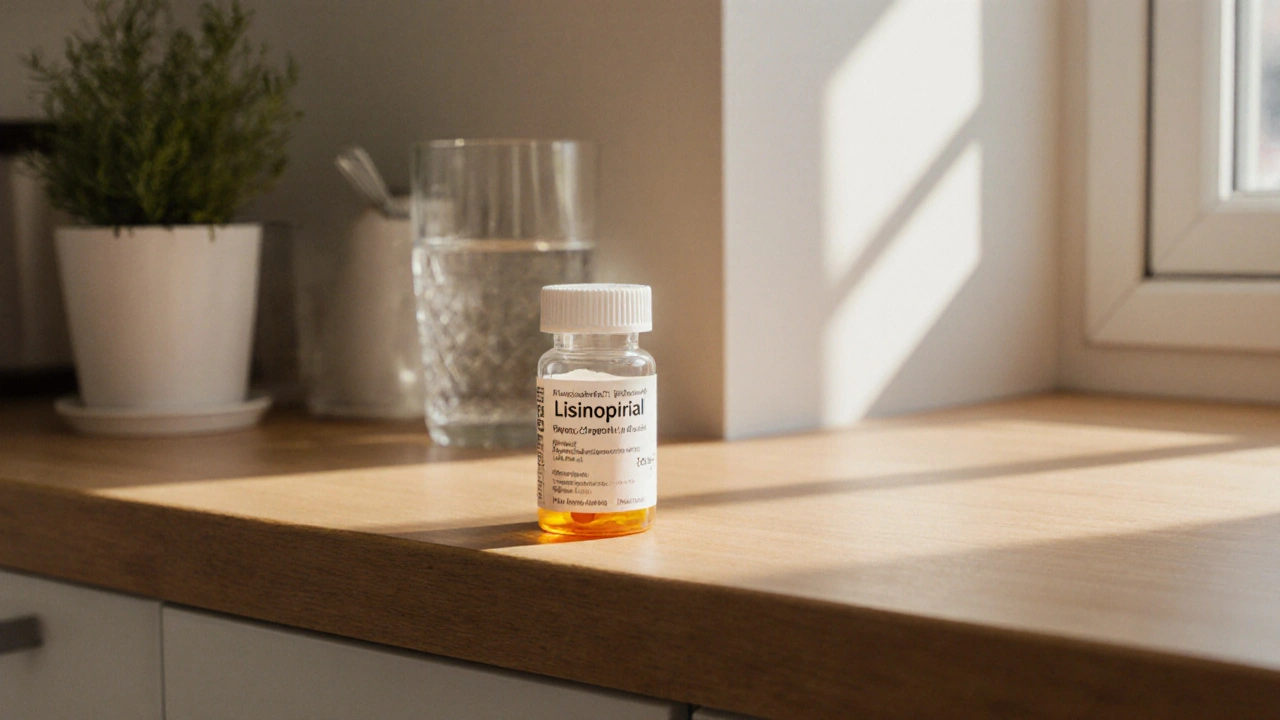
How to Store and Safely Dispose of Lisinopril (ACE Inhibitor)
Learn how to store Lisinopril safely, keep its effectiveness, and dispose of leftovers responsibly with clear steps and FAQs.
When you take Lisinopril, a common ACE inhibitor used to treat high blood pressure and heart failure. Also known as an ACE inhibitor, it works by relaxing blood vessels so your heart doesn’t have to work as hard. But if you don’t store it right, it can lose strength—or even become unsafe. Many people assume all pills are the same when it comes to storage, but that’s not true. Lisinopril is sensitive to moisture, heat, and light. Keep it in a cool, dry place away from your bathroom sink or kitchen counter near the stove. Humidity is the enemy here. A bedroom drawer or a cabinet away from the shower is better than any bathroom shelf.
Don’t leave Lisinopril in your car, even for a few hours. Summer heat can push temperatures over 120°F inside a parked car. That’s enough to break down the active ingredient. The same goes for leaving it in a hot mailbox or a sunlit windowsill. The pill stability, how long a medication keeps its full potency under normal conditions matters. Once it degrades, you might not get the full dose your body needs to control your blood pressure. And that’s not just inconvenient—it’s risky. Also, keep it in its original bottle. The child-resistant cap isn’t just for safety—it helps block moisture. Never transfer it to a pill organizer unless you’re using it for the day and plan to refill it daily. Long-term storage in plastic or glass organizers can expose it to air and humidity.
Some people ask if refrigerating Lisinopril helps. The answer is no. Cold doesn’t improve its shelf life, and condensation from taking it in and out of the fridge can introduce moisture. Stick to room temperature, between 68°F and 77°F. If you’re traveling, keep it in your carry-on, not checked luggage. Baggage holds can get extremely hot or cold. And always check the expiration date. Expired Lisinopril doesn’t suddenly turn dangerous, but it won’t work as well. If you’re unsure whether your pills are still good, don’t guess—ask your pharmacist. They can tell you if the batch is still stable or if you need a refill.
Children and pets can’t tell the difference between candy and pills. That’s why keeping Lisinopril out of reach isn’t just a suggestion—it’s a must. A single accidental dose can be dangerous for a small child. Use cabinets with locks if you have toddlers or curious pets. Also, never share your medication. Even if someone has high blood pressure, their dose is tailored to their body. What works for you might harm them.
When you’re done with old or expired Lisinopril, don’t flush it or toss it in the trash. Many pharmacies offer take-back programs. If yours doesn’t, mix the pills with coffee grounds or cat litter, seal them in a plastic bag, and throw them in the household trash. This makes them unappealing and harder to accidentally ingest. It’s also better for the environment than flushing drugs into water systems.
You’ll find a lot of advice online about storing meds, but not all of it is accurate. Some blogs say to freeze pills. Others suggest keeping them in the fridge. For Lisinopril, those tips are misleading. The facts are simple: cool, dry, dark, and out of reach. That’s it. Following these steps ensures your medication stays strong, safe, and ready to do its job every day. Below, you’ll see real examples from other users who’ve dealt with storage issues—and how they fixed them.

Learn how to store Lisinopril safely, keep its effectiveness, and dispose of leftovers responsibly with clear steps and FAQs.